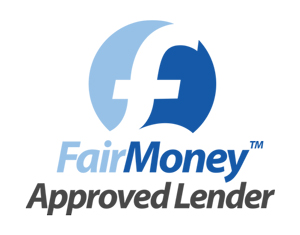In a spin about smart bikes with a £2,000 price tag like Peleton? Here's eight tips to get riding without feeling the burn in your pocket

If one of your New Year's resolutions is to get fit the latest craze of indoor smart fitness bikes may be tempting.
The Peloton and other high tech fitness bikes have revolutionised the way we exercise. All across the country, more people are shunning the gym in favour of bikes that let them work out from the comfort of their own homes - and get social or engaged while doing it.
There are many benefits - buying equipment like this means you can avoid having to drag yourself to a gym on a rainy day, while the body conscious don’t have to worry about critical stares or sharing facilities.
But with a hefty price tag of around £2,000 (typically excluding live class subscriptions and accessories) Peloton and competitor models can make even the most dedicated fitness fanatic squirm.
The good news is that there are a range of alternatives that are more affordable that offer the same, if not similar benefits to smart bikes.
Obviously, you could just buy a normal bike and go for a ride outdoors, but on the basis that's not what many people are looking for, here we compare the prices of some of the competitors taking on Peloton and provide tips on how to reduce the cost of spinning indoors.
1. Consider the competition
Buying a smart bike from the top brands can be an expensive outlay but the competition is heating up with many new entrants in the UK market.
Peloton, which has 1.6 million members globally has certainly excelled at generating more publicity than its competitors – making it top of mind for many consumers.
With the basic Peloton package costing £1,990, it’s not within the financial reach of everyone.
But not all smart bike providers seem perturbed about that, as new entrants like Kickr Bike are even more expensive than Peloton, with the entry price at £2,799 this month.
There are other, cheaper alternatives to consider, however, like Echelon, Wattbike Atom and the Smart Power 10.0 Pro (see below).
| Smart bike | Price | Live class subscription fee (monthly) | Loan APR |
|---|---|---|---|
| 1. Kickr Bike | £2,799 | Not offered | 0% |
| 2. Technogym | £2,450 | Rebel classes cost £39 - £49 | 0% |
| 3. Peloton | From £1,990 (basics package) to £2,389 (family package) | £39.99 | 0% |
| 4. Wattbike Atom | £1,599 | Offers downloadable training plans for free from Wattbike Hub | Six months -0%; 12 months - 4.9%; 24 months - 9.9% |
| 5. Echelon | £1,238.99 | £39.99 | 18.9% |
| 6. Smart Power 10.0 Pro | £999 | Includes one year iFit Coach membership, then costs £11.95 per month | Interest free options from 6-18 months or Classic Credit at 9.9% |
| Prices correct as at 10 January, 2020 | |||
2. Cut out the accessories
Many smart bike providers offer basic packages and then build up to more expensive ones that will contain extras such as work out accessories.
If you’re not sure how committed you will be to exercising at home then start with a basic plan.
For instance, Peloton has a few pricing packages on offer: for the budget conscious it has a basic package (£1,990), which will only involve purchasing, delivery and set-up of the bike.
Stick to that and you can keep costs down.
Once you feel you need for accessories for your workout, shop around online or at sports stores for alternatives - they're likely to be cheaper.
3. Get the entire family on board
If you do splash out on a smart bike and pay the subscription to the live exercise classes, try and persuade other members of the household to use it rather than them going out and joining a gym.
That splits the cost and savings set against what you would all be paying on gym membership otherwise.
They don’t even have to use the exercise bike. A Peloton spokesperson says: ‘The App has thousands of classes across categories such as cycling, running, walking, strength, stretching, cardio, yoga and meditation. The App is accessible via iOS, Android, web, as well as Amazon Fire TV.
‘The monthly subscription fee is charged per household, so if you have more than one person working out, that’s a shared cost – you can have multiple profiles and riders for a single bike.’
4. Consider an interest-free loan
If you can’t afford the smart bike outright many providers selling the fitness equipment are offering interest-free loans that you can repay over a couple of months.
But not all do and if the loan isn't interest-free, the total cost of the bike will rise. The Echelon, for example, can be bought with a loan APR of 18.9 per cent. Others will only start charging interest if you decide to take longer to pay off the loan.

Dr Roger Gewolb, founder of FairMoney points out that there are other loans to consider that could be cheaper than what some smart bike providers are offering
So, for example, the Smart Power 10.0 Pro loan is interest-free if you’re willing to pay off the amount within 18 months.
However, an APR of 9.9 per cent applies if you want to pay over 48 months for the Smart Power and the Wattbike (see table above).
Still, these loans could be cheaper than what some credit cards offer so it's important to shop around.
Dr Roger Gewolb, founder of FairMoney.com points out: 'There are many providers who offer loans over £1,000 at APR that is considerably lower than 18.9 per cent.
'If you were looking to finance one of these exercise bikes via credit card, it is worth taking into consideration whether or not you are an existing customer, or looking to take out a new card.
'The average rate of interest for a credit card in the UK is 19.02 percent for new offers and 15.10 per cent for existing customers.'
5. Buy a turbo trainer instead
Many companies now offer smart turbo trainers which allow riders to attach their own bike to a trainer. These more affordable options range in price from a £50 basic model at Halfords up to as much as £1,200.
James Nicholls, from Halford,s says: ‘This year we’ve seen turbo trainers boom in popularity, undoubtedly thanks to their similarity to Peloton and Soul Cycle.
‘Most trainers use an app that links your turbo trainer to your computer, smartphone or tablet. Pedalling your bike powers an avatar around a course. It really is addictive and a bit of a game-changer for cycling fans and is the ultimate way of getting fit without stepping outside.
‘Many of the systems also includes a social element, with the ability to track down friends, join virtual group rides and even use a built-in chat element to encourage fellow users.’
Nicholls adds that the choice of turbo trainer, it depends how frequently it's used and what you'll be using it for.
'For infrequent users on a budget, a standard mechanical turbo trainer would be fine.
'However for those spending a lot of time on the turbo, frequently training indoors, or training for an event, we’d recommend getting a SMART turbo trainer, which enables you to link your turbo with third party apps, making training much more fun and structured.
'If you live in a flat or a place where noise travels, and disturbs people, we’d recommend investing in a fluid or direct drive turbo trainer, which are much quieter than their electro-magnetic controlled counterparts.
'Finally, if you can afford one, a direct drive trainer will reduce the wear and tear on your bike - as you connect your bike drive train directly to the turbo, as opposed to mounting the back wheel on a roller which wears out the tyre.'
6. You don’t have to subscribe to the provider’s live classes or apps
There are plenty of other apps and training platforms that have been developed that offer exercises that you can download and go through yourself at your own pace.
Apps like Zwift offer similar live exercise classes to what Peloton offer often at a cheaper rate (see below). Whereas others that offer training plans, such as Strava, cost as little as £4 a month.
You can also subscribe to a few training plan providers to see which one suits you best, as most offer a free trial ranging from 14-30 days, or in the case of Trainerroad offer to refund you the membership if you’re not satisfied within 30 days.
Don't forget to cancel at the end of free trials.
Find out what’s included with your bike purchase, as some smart bikes like the Smart Power 10.0 Pro comes with a one year iFit Coach membership included. Always find out what you’ll be paying once these types of offers expire.
| Fitness apps | Price (monthly) | Free trial |
|---|---|---|
| 1. The Sufferfest | $12.99 (£9.96) | 14 days |
| 2. Strava Summit | £4 | 30 days |
| 3. Zwift | £12.99 | 30 days |
| 4. Traineroad | $19.95 (£15.30) | No free trials |
| 5. Fulgaz | £9.99 | 14 days |
| 6. Rouvy | $10 (£7.67) | 14 days |
| Prices and currency conversions correct as at 10 January, 2020 | ||
7. Try the smart bikes out at gyms, hotels, showrooms and classes
Another way to make sure you have an affinity for the product, or to train on them without the massive outlay is to try them out in gyms, or even if you are staying in some hotels.
Peloton says that there are hundreds of hotels that have Peloton Bikes on-site for guests to use on trips.
You can find one using their Hotel Finder tool or you can book a slot to try out the bike at one of their showrooms.
Alternatively, join the likes of SoulCycle, which offers bike exercise classes in studios.
With no membership commitments they are becoming increasingly popular, mainly because you can buy as many or as few classes as you like.
8. Wait for the sales
Check to see if the smart bike provider offers any deals or specials. At the time of writing, Peloton is offering £100 off accessories till 31 January, 2020.
At the time of writing, Echelon's Smart Connect Bike EX3 Max was also on sale, discounted down from £1,439.98 to £1,238.99.
You can read the original article here: https://www.thisismoney.co.uk/money/savemoneymakemoney/article-7869103/How-smart-exercise-bike-without-paying-Peloton-style-prices.html


